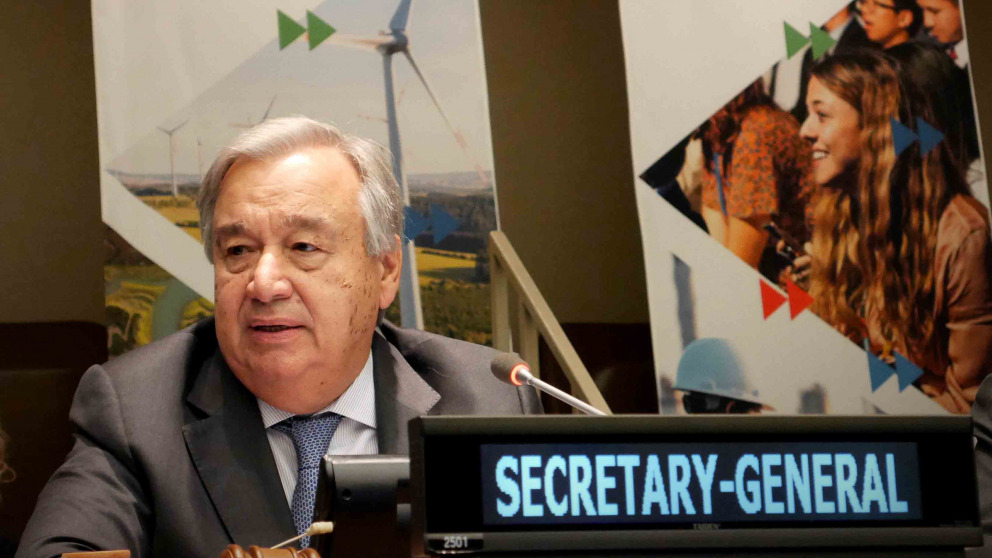Climate Summit in New York: Plenty of Promises, but Little Action
04.10.2019

From 23 to 25 September 2019, heads of government met at the United Nations in New York to discuss the fight against climate change and, later, the progress made towards achieving the UN Sustainable Development Goals (SDGs). German Chancellor Angela Merkel also travelled to New York to support efforts to deliver on the goal of the Paris Agreement to limit global warming to 1.5 degrees Celsius. The Climate Summit, which was hosted by the UN General Assembly under António Guterres, sought to build momentum for more ambitious climate protection measures under the Paris Climate Agreement. The summit comes at the tail end of an important year in which states must hammer out the final details of the Paris Agreement, including regulations on market mechanisms, so that they can begin with its implementation in 2020. The signatory countries have also been called upon to increase their national climate protection promises under the treaty – their “Nationally Determined Contributions” (NDCs).
Summit does not deliver on promise of “Action not words”
With Germany way off track from meeting its climate targets for 2020 (instead of the promised 40 per cent reduction in emissions, Germany is only likely to achieve 32 per cent), it was particularly important to attend the summit with a cabinet resolution outlining how the government intends to achieve the climate targets by 2030. Anything less would risk tarnishing Germany’s image as a pioneer in climate policy. And while scientists in Germany were already questioning the effectiveness of the proposed measures, especially the adoption of carbon pricing in the transportation and heating sectors, the Chancellor scored some points with the announcement that Germany would double its pledge to the Green Climate Fund (GCF), the climate funding mechanism of the United Nations Framework Convention on Climate Change (UNFCCC), to $US 1.7 billion. This makes Germany, together with France, by far the largest donor to the GFC. A number of other European countries also pledged to provide additional funding, along with Canada, South Korea and Monaco, delivering a total of USD 7.4 billion to the Fund (see GCF,2019) – an outcome that can only be described as positive.
The summit was marked by the at times highly emotional demand that we take more ambitious and urgent action to address the climate emergency. Greta Thunberg’s stinging “How dare you?” speech caused a sensation, as the young climate activist accused world leaders – and adults in general – of failing those generations who will be most affected by the impacts of climate change. But all in all, the summit outcomes were rather insipid. Despite the massive global protests, there was little sign of the “actions not words” that Guterres had hoped for. Although 69 countries promised to strengthen their NDCs, and many adopted the goal of either greenhouse gas or carbon neutrality by 2050 (a total of 77 countries have now pledged to achieve carbon neutrality by 2050), concrete measures such as more ambitious reduction targets and timelines were thin on the ground. And, as is so often the case, major emitters such as the USA, China and India all failed to make any significant commitments. The president of the host country, the USA, had nothing but scorn for climate activist Thunberg and her message, preferring instead to devote his time to a parallel summit on religious freedom. And so, for the most part, the summit was marked by mere calls for action and cooperation.
Private sector promises climate action
What is perhaps remarkable is the attention that the summit has received from the private sector. Alongside various announcements from the banking and service sectors, a statement by the CEO of Swedish steel giant SSAB, Martin Lindqvist, stood out. According to Lindqvist, hydrogen-based technologies will soon bring change to the energy-intensive steel industry, and the first fossil-free steel-making technologies could be expected as early as 2025. Secretary-General Guterres was also lauded for his commitment to the issue of climate action. He was particularly clear on the subject of coal-fired power generation and repeatedly called for an end to the construction of new coal-fired power plants by 2021. As colleagues from the Climate Analytics think-tank noted, phasing out coal by 2040 is not only a necessary measure, it is probably the most important step we can take if we want to make the 1.5-degree-target a reality.
The first UN summit to review progress in the implementation of the 2030 Agenda for Sustainable Development followed directly after the Climate Summit. The link between the two issues is central, because for many countries climate protection will begin with the strengthening of sustainable development policies. The political declaration adopted at the SDG Summit acknowledges that current efforts to achieve the SDGs worldwide are lacking, even though many countries are committed to stepping up action.
“Listen to the scientists”
In the run-up to the Summit, coalitions of states, non-governmental organisations and private sector entities were formed to develop concrete proposals for solutions to pressing climate policy challenges. One approach was put forward by the Climate and Clean Air Coalition (CCAC), which has developed an Action Programme to help countries integrate air quality concerns into their NDCs. Many measures, for example in the transportation or agricultural sectors, can benefit both air quality and climate protection ambitions as well as improving health and/or food security. The recently published IASS Policy Brief “A Practical Approach to Integrating Climate and Air Quality Policy” makes recommendations for the integration of air quality and climate action and offers concrete examples.
One aspect that almost all contributions to the Climate Summit had in common was the recognition that “we must listen better to science” – in other words, we must make more and better use of climate research. While this acknowledgement comes late in the game, it offers at least a glimmer of hope.
